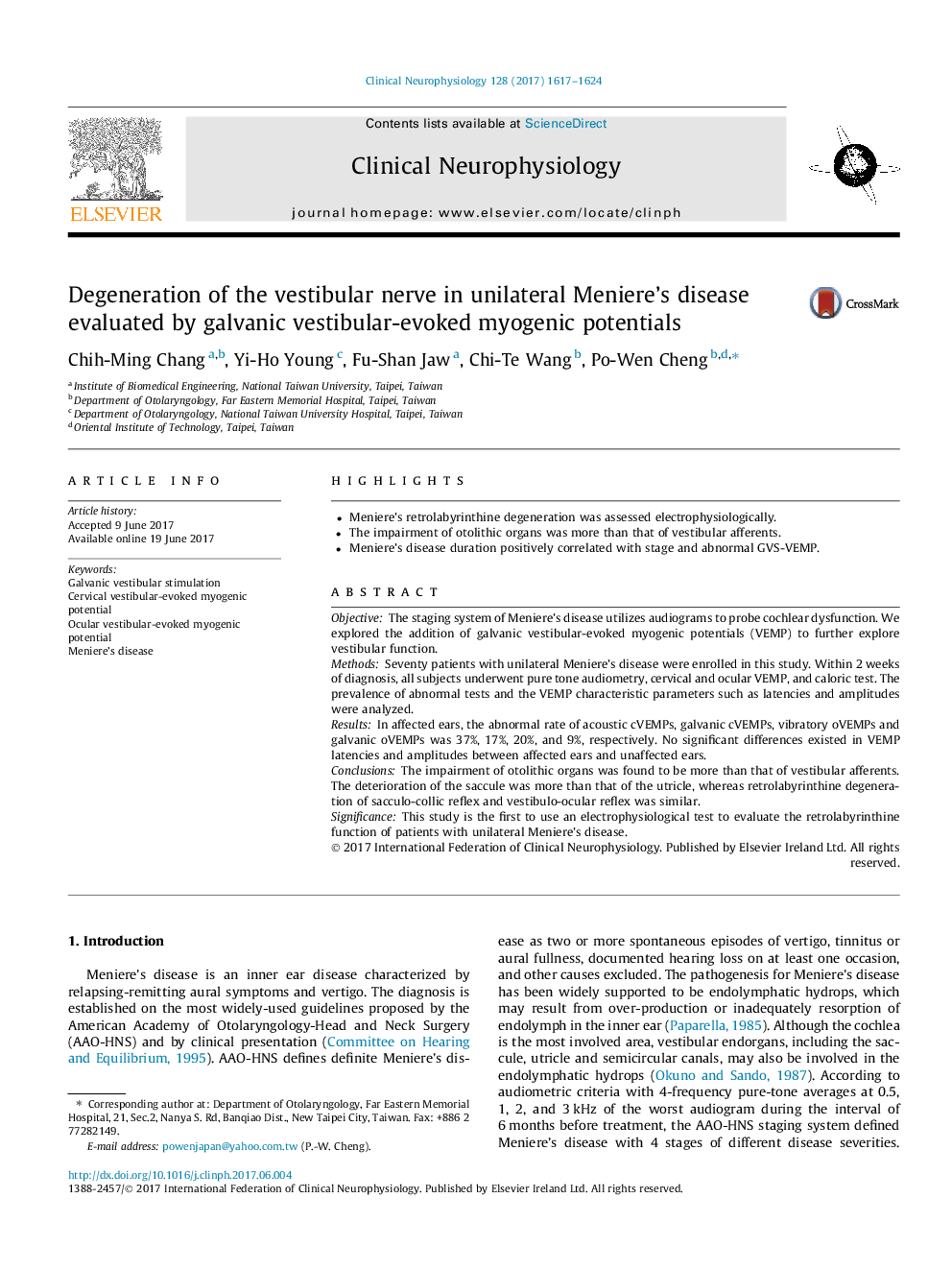| Article ID | Journal | Published Year | Pages | File Type |
|---|---|---|---|---|
| 5627242 | Clinical Neurophysiology | 2017 | 8 Pages |
â¢Meniere's retrolabyrinthine degeneration was assessed electrophysiologically.â¢The impairment of otolithic organs was more than that of vestibular afferents.â¢Meniere's disease duration positively correlated with stage and abnormal GVS-VEMP.
ObjectiveThe staging system of Meniere's disease utilizes audiograms to probe cochlear dysfunction. We explored the addition of galvanic vestibular-evoked myogenic potentials (VEMP) to further explore vestibular function.MethodsSeventy patients with unilateral Meniere's disease were enrolled in this study. Within 2Â weeks of diagnosis, all subjects underwent pure tone audiometry, cervical and ocular VEMP, and caloric test. The prevalence of abnormal tests and the VEMP characteristic parameters such as latencies and amplitudes were analyzed.ResultsIn affected ears, the abnormal rate of acoustic cVEMPs, galvanic cVEMPs, vibratory oVEMPs and galvanic oVEMPs was 37%, 17%, 20%, and 9%, respectively. No significant differences existed in VEMP latencies and amplitudes between affected ears and unaffected ears.ConclusionsThe impairment of otolithic organs was found to be more than that of vestibular afferents. The deterioration of the saccule was more than that of the utricle, whereas retrolabyrinthine degeneration of sacculo-collic reflex and vestibulo-ocular reflex was similar.SignificanceThis study is the first to use an electrophysiological test to evaluate the retrolabyrinthine function of patients with unilateral Meniere's disease.
